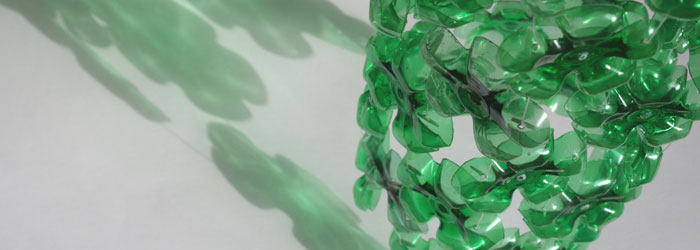How do you understand sustainable design?
This is a really interesting question, I think we talk about sustainability but never really reflect upon its numerous meanings. To answer this, I don’t see sustainable design‚ as a singular thing; it’s a multitude of questions
It is sustainable because …….
- the material it is made from, this could be a reformed secondary material or what people call eco-friendly/green material. Or a primary material which has a working collection process in-situ and is easily recycled.
- the way in which it is made, its eco footprint (are the working conditions of the people who manufactured it healthy? Were any chemicals used in the process, did it not damage the environment? How much energy is used in the making? Was it made and sold locally?)
- the reason why it is made, its very existence as not just another product on the market. Neiman Marcus (USA high end retail chain) have put my Cascade Lancashire light under fantasy gifts. I don’t think it is a fantasy, in fact it is a reality. My works reflect on solutions to manufacturing/making in today’s world.
- the educational value of usage to the consumer. (as it’s being used, does it make the owner think and promote recycling and reuse/education? Does it help promote green habits?)
- when it is no longer wanted, can be disassembled and recycled again?
What kind of special material and craft did you apply in your designs?
I use plastic drinks bottles in my designs. It is so much more challenging to use an existing shape and material. My inspiration came from my method of enquiry about plastic as a material. I deconstructed the material, rather than asked, “what can I make from plastic bottles?”. I applied my creative design, maker, and artistic skills to transform the overlooked into the beautiful. I would like to think that my designs are the Sex in the City of the reuse world!
What inspires your sustainable light design?
Why do we continue to use virgin materials when there are millions of tonnes of excess materials surrounding us? Plastic bottles are designed to carry liquid. Billions has been spent on their design and product marketing. Once a plastic drinks bottle is empty it is perceived as redundant and is throw away. I wanted to challenge this wasteful paradigm. My design philosophy is also my lifestyle philosophy. If you keep the two together they constantly make you reflect more on what you do and make.
Why did you decide to make your designs using recycled material?
It seemed the most logical step forward – we have a lot of waste material in the world – let’s make something from it, rather than designing products from our natural resources, which are running out.
What is the future of that kind of designs?
Green design helps set an educational example to new consumers. Actually a lot of consumers are getting more environmentally savvy and young people are far more aware of green products and are expecting to see them. I think we will be seeing more of them because they are more interesting and surprising!
What is challenging about designing products using recycling?
Many people assume making from found is in some way an easy choice. FAR FROM IT nothing is easy or straight forward using found materials from Logistics, collection – making it look good, and introducing something handmade to the mainstream market.
What kind of materials you prefer to work with?
Any, but I mainly use plastic at the moment, but I also work with electrical parts too. It would be very interesting to work with a company and design new work from their previous design range.
How would you describe your work?
Sexy, desirable, funky, stylish, caring and responsible as possible answer to sustainable manufacturing.
How did the idea come to create your designs?
Looking at things differently, using my eyes and hands, feeling, looking experimenting. By addressing the problems of today I wanted to make products for our future generations. I did two things: I started rethinking how products are manufactured, and deconstructed my material of choice.
I feel as a designer it does come with a subtle responsibility tag attached. New products change people’s behavior e.g. portable music changed how we listen to music.
I know at an exhibition of my work people never think of plastic bottles in the same way again. It’s good to have an effect on how people see things.
Is the process of recycling difficult?
YES! It is much more difficult to design and make something from a reused object.
Firstly you have to collect enough material to make your design – my 6 foot Cascade design takes 540 plastic bottles to make. Then the material has to be cut, washed, dried and sanded before finally being hand assembled.
If you compare this to a light made from new plastic, companies buy the new plastic material, melt it and mould it then mass produce it and sell. This seems soulless to me.
So it is much more challenging to make from found objects. I do enjoy the challenge of rethinking how you make something, how you manufacture it and where has it come from?
Today we are so consuming and materialistic when we buy something we don’t normally think about who made the chair/table, etc. What is the narration of that product? Did people who were paid properly and treated fairly make it? For me, green design is not a fashion statement; it encourages consumers to be more reflective regarding their purchases. I love this!
What do you use to connect your plastic bottles?
Tagger ties, they are used in the retail industry to attach the price to a garment of clothing. I use them because they give my work an architectural quality, they are virtually invisible and I am not so good at sewing!
